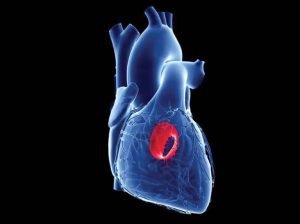Mitral Makeover

Mitral Valve Regurgitation: A Silent but Serious Condition
While our bodies are usually good at signaling that something is off about our health, some illnesses can stealthily sneak up on us. One such condition is mitral valve regurgitation—a common type of heart valve disease that can lead to severe consequences if not treated in time.
Patients suffering from mitral valve regurgitation tend to experience shortness of breath, fatigue, and heart palpitations. In some cases, the condition can progress slowly, making such symptoms subtle and easily overlooked.
“For some patients with the disease, it may take years for the symptoms to manifest,” said Institut Jantung Negara (IJN) Senior Consultant Cardiothoracic Surgeon, Prof. Dato’ Seri Dr. Azhari Yakub. “That’s why it’s so important to have regular checkups to make sure everything is in order. If you’re suddenly experiencing extreme fatigue, chest pains, or breathing difficulties, it is always wise to consult a medical professional.”
As indicated by its name, mitral valve regurgitation affects the mitral valve separating the heart’s left chambers. The heart’s four valves act as one-way doors to ensure that blood continuously flows in the right direction throughout the body. When a valve is unable to close properly, blood can “leak” backward across the valve. In severe cases, this dramatically reduces blood circulation, and over time, it will weaken and lead to heart failure.
While risk factors for the condition include infections such as rheumatic fever, its exact cause is unknown.
“In our experience, it usually occurs among individuals aged between 40 to 60, but we have seen even younger patients with the condition,” added Dr. Azhari.
Rescue via Repair
Conventional treatment for mitral valve regurgitation involves replacing the faulty valve entirely via open-heart surgery. The use of artificial valves comes with its own set of complications; patients with mechanical valves may need to be on blood thinners for life to prevent blood clots, while valves with biological tissue risk failing over time.
“Now, whenever possible, we prefer to repair rather than replace—this means reconstructing a patient’s own valve so that it can function properly,” said Dr. Azhari. “The advantage of valve repair is that you preserve your own valve and have better heart function.”
As an example, he cites the clinical guidelines issued by the European Association for Cardio-Thoracic Surgery, which recommends mitral valve repair as the “surgical intervention of first choice.”
Dr. Azhari is one of the pioneers of mitral valve repair in Malaysia, having performed it since 1992 and boasting a success rate of 90 to 95%. He is also a leading opinion maker for this niche of cardiothoracic surgery within the Asia-Pacific, carrying out live surgery demonstrations at IJN and in other countries such as Thailand, Vietnam, Indonesia, Bangladesh, and Kazakhstan.
“In the past, mitral valve repair usually had to be done during open-heart surgery,” explained Dr. Azhari. “However, with new and recent medical advancements, we have had great success performing the procedure using minimally invasive techniques. Of course, the availability of this option will vary due to factors such as the severity of the disease.”
Another minimally invasive option is the MitraClip, a small, catheter-based device designed to narrow the mitral valve opening. IJN was the first in Malaysia to introduce the MitraClip procedure in 2011 and has since implanted the device in 100 patients—making the center one of the few in the region to do so.
Dr. Azhari added that as IJN frequently handles complex cases, the center is constantly on the lookout for new and innovative approaches.
“We believe in taking a personalized approach as each patient’s needs are unique. Our aim is to offer patients a range of evidence-based options and work together with them to tailor a treatment plan that is best suited for them,” he said.







